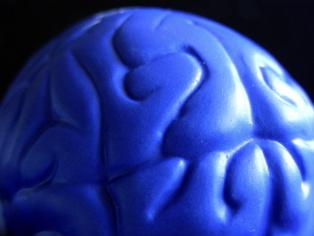
A few weeks ago two «Flagship» projects of the European Commission, intending to be powerful symbols of European research, were announced.
One of them focuses a significant, lasting challenge for scientific research: the «Human Brain». Funded at over one billion euros over the next decade, at a time of drastic financial distress and funding cuts, this project aims to discover how the brain functions by modeling and simulating millions of neural connections by using and developing new supercomputer architectures.
A related goal is to create a dynamic, intelligent system, which will access a database with information from all relevant publications in neuroscience research, automatically gleaned from the existing literature by using information extraction and text mining techniques. By accessing this system, researchers are expected to find all the relevant published knowledge about the brain and use it to build their own models and advance their research.
The brain is not like a computer
My opinion? While it might indeed be very instructive to construct simulations of millions of neurons this requires first finding out how to build a detailed, accurate simulation of just a few neurons, rather than millions.
Once we really know how neurons store, transmit, encode and interpret information among a limited number of neurons —to fully understand how information is coded, transmited and interpreted between two neurons would be a fundamental breakthrough—, the «bottom-up» discovery process should become more feasible.
John von Neumann pointed out, a few weeks before his death, as published in his posthumous book «The Computer and the Brain» (1958), how information processing and the «logic» of the brain are totally different from that of computers —frequently called «von Neumann» machine – and he ought to have known as, he designed the logical model for their architecture.
Likewise, Claude Shannon, the contemporaneous founder of communication theory, also known as Shannon’s Information Theory, always denied the possibility of using his theory to grasp how information is coded and transmitted in living, sentient beings.
Not surprisingly, efforts to use Shannon’s theory to discover the genetic code in the 1950s failed. While the use of «bits» has revolutionized communication and our computer-ubiquitous lives, they have been of little use in helping us understand how living beings process and give meaning to the many types of «information» we recognize as being shared among humans.
However, such «bottom-up» approach will not be enough to understand complex processes at a higher level, such as short and long term memory, reasoning, language processing, image interpretation, and other basic functions of the brain –even including consciousness. THis will require a different approach, combining such reductionist approach, with a «top-down» approach, where also the influence of the environment is fundamental. Two different, complementary directions.
Considering the proposal to build a large database containing all the information published about neuro-scientific research, which would need constant automatic updating, this might prove much simpler than it appears, at least from a computational perspective. In our group we have already carried out such research, analyzing information coming from all the papers stored in PubMed, extracting automatically information about computing resources of various types: bioinformatics, medical informatics and nanoinformatics.
We have investigated how to create what might be called a «resourceome», ie. a set of information resources of different types and at different levels. We published this about five years ago, with some commentary reflected in the Blog of the editors of the Science Careers section from the journal Science *. The problem of extracting precise information about brain physiology from the literature can be seen as quite similar and, certainly, not really demanding any original or fundamental computational advance.
The «Brain Map» project
A few days ago, the American project «Brain Map» was mentioned in the State of the Nation speech by President Obama. This is not the first related megaproject, since the «Decade of the Brain» was earlier launched –in 1990– by President Bush (senior). Obama compared his new ‘Brain Map” project with the Human Genome Project, which had a huge scientific impact. For instance, it created several new scientific areas and it changed our view of genetics and genomics, as well as medicine itself. From an economic point of view, it launched a whole industry. As Obama stated, the benefits of the «Brain Map» project could be also great, leading to similar financial successes.
However, the «Decade of the Brain» had a very limited success, and it is today remembered with little enthusiasm. Now, we will have to wait and see what happens with this renewed effort. With $ 300 million per year (doubling the European Human Brain project, as it often happens in these transatlantic scientific comparisons), the Brain Map project appears to be ready to embark on the construction of a map similar to that of the European project, but at a more detailed level, analyzing the basic principles of neuronal operation.
This will require creating new research techniques, which include nanotechnological developments and information management at the molecular and «nano» level. Let me say here that to manage information at such nano level is the goal of a novel, recent discipline, called nanoinformatics –in which our group has also participated in early developments. I copy below a couple of examples of the publications that we have reported to this day in this area of nanoinformatics**.
Who will succeed?
Who will succeed? If I may try to be a soothsayer, both the American and European projects will likely make fundamental advances, but it is doubtful that the final goal of getting a detailed map of brain functioning will be achieved in this short period of time. In such a race, a basic science project, with a larger budget, can have better chances of success. However, comparisons with the Human Genome Project are not possible.
The latter was a problem which did not rely on fundamental chemical and biological advances and it substantially benefited from an information management strategy that proved to be wise: to openly share information and informatics tools. In fact, to get the DNA sequenced was very laborious and complicated, but the DNA was already known, some fundamental techniques were already available, and it was not necessary to rely on a radical breakthrough in science or a paradigm shift in Kuhn’s sense.
DNA sequencing progressed quickly through the division of labor between various groups and the free, open exchange of information and bioinformatics programs in various continents through a centralized reference. A very complicated problem, but not overly complex —playing with words.
Once the human genome was sequenced, the next goal was to identify the genes and mutations that underlie many diseases (cancer, rare diseases, etc), but this has proved to be a much more complex problem than was the sequencing of the DNA itself. The path to genomic medicine promises to be much harder than expected.
Besides the difficulty of achieving consensus among more than one hundred research groups in the European project —and overcome the challenges presented by the EU bureaucracy— such megaprojects have an inherent danger: if they fail, they can stop progress in the area for many years.
An example is the notorious «Fifth Generation Computer Project», launched in Japan in the ’80s, which aimed at creating intelligent computers that could be easily programmed and could communicate with humans in natural language. It failed, by most accounts, in terms of producing new science, though it was hardly a failure for those who benefited from the billion dollars that the Japanese government invested in it!
Get ready, get set, go!! The race has just began…
References
de la Calle G, García-Remesal M, Nkumu-Mbomio N, Kulikowski C, Maojo V. e-MIR2: a public online inventory of medical informatics resources. BMC Med Inform Decis Mak (2012). DOI:10.1186/1472-6947-12-82.
de la Calle G, García-Remesal M, Chiesa S, de la Iglesia D, Maojo V. BIRI: a new approach for automatically discovering and indexing available public bioinformatics resources from the literature. BMC Bioinformatics (2009). DOI:10.1186/1471-2105-10-320.
Science Careers: http://blogs.sciencemag.org/sciencecareers/2010/07/easier-access-t.html.
Victor Maojo, Martin Fritts, Diana de la Iglesia, Raul E. Cachau, Miguel Garcia-Remesal, Joyce A. Mitchell, Casimir Kulikowski. Nanoinformatics: a new area of research in nanomedicine. International Journal of Nanomedicine (2012). DOI: 10.2147/IJN.S24582.
Maojo V, Fritts M, Martin-Sanchez F, De la Iglesia D, Cachau RE, Garcia-Remesal M, Crespo J, Mitchell JA, Anguita A, Baker N, Barreiro JM, Benitez SE, De la Calle G, Facelli JC, Ghazal P, Geissbuhler A, Gonzalez-Nilo F, Graf N, Grangeat P, Hermosilla I, Hussein R, Kern J, Koch S, Legre Y, Lopez-Alonso V,Lopez-Campos G, Milanesi L, Moustakis V, Munteanu C, Otero P, Pazos A, Perez-Rey D, Potamias G, Sanz F, Kulikowski C. Nanoinformatics: developing new computing applications for nanomedicine. Comput Sci Eng. (2012).
Source: Ciencia y Sátiras, Tendencias21.




















Hacer un comentario